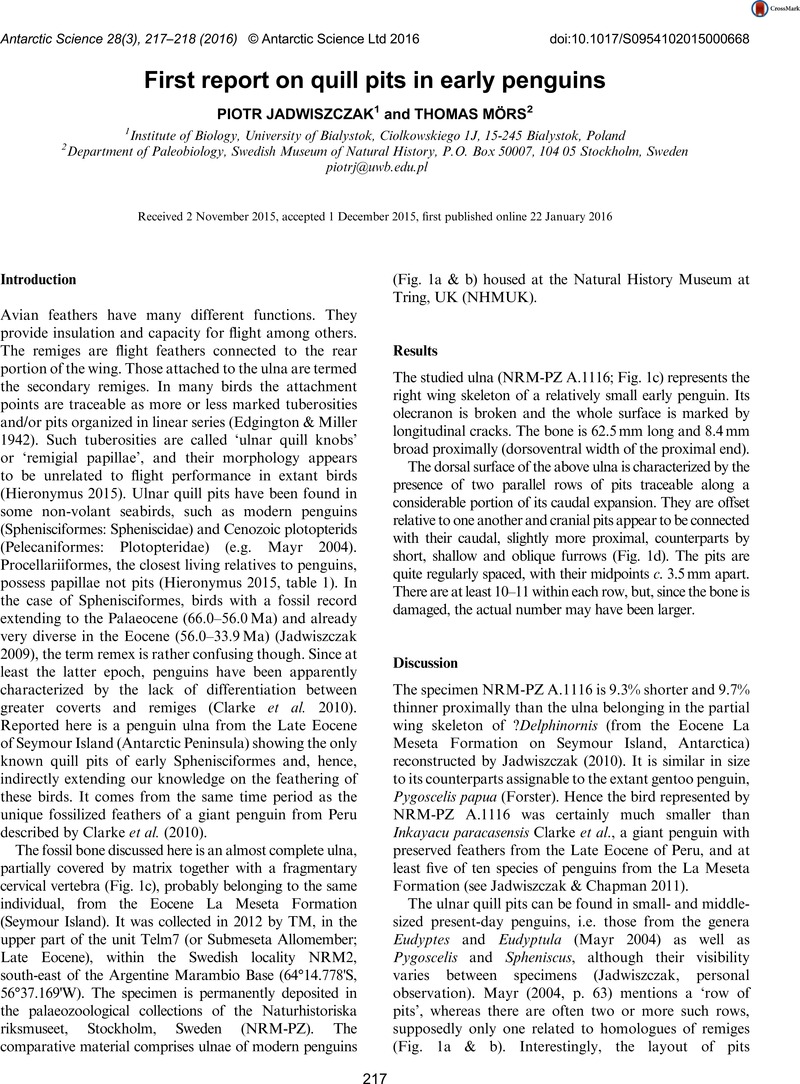Crossref Citations
This article has been cited by the following publications. This list is generated based on data provided by Crossref.
Engelbrecht, Andrea
Mörs, Thomas
Reguero, Marcelo A.
and
Kriwet, Jürgen
2017.
A new sawshark,Pristiophorus laevis, from the Eocene of Antarctica with comments onPristiophorus lanceolatus.
Historical Biology,
Vol. 29,
Issue. 6,
p.
841.
Mayr, Gerald
De Pietri, Vanesa L.
Love, Leigh
Mannering, Al A.
and
Scofield, R. Paul
2017.
A well-preserved new mid-paleocene penguin (Aves, Sphenisciformes) from the Waipara Greensand in New Zealand.
Journal of Vertebrate Paleontology,
Vol. 37,
Issue. 6,
p.
e1398169.
JADWISZCZAK, Piotr
SVENSSON‐MARCIAL, Anders
and
MÖRS, Thomas
2023.
An integrative insight into the synsacral canal of fossil and extant Antarctic penguins.
Integrative Zoology,
Vol. 18,
Issue. 2,
p.
237.




